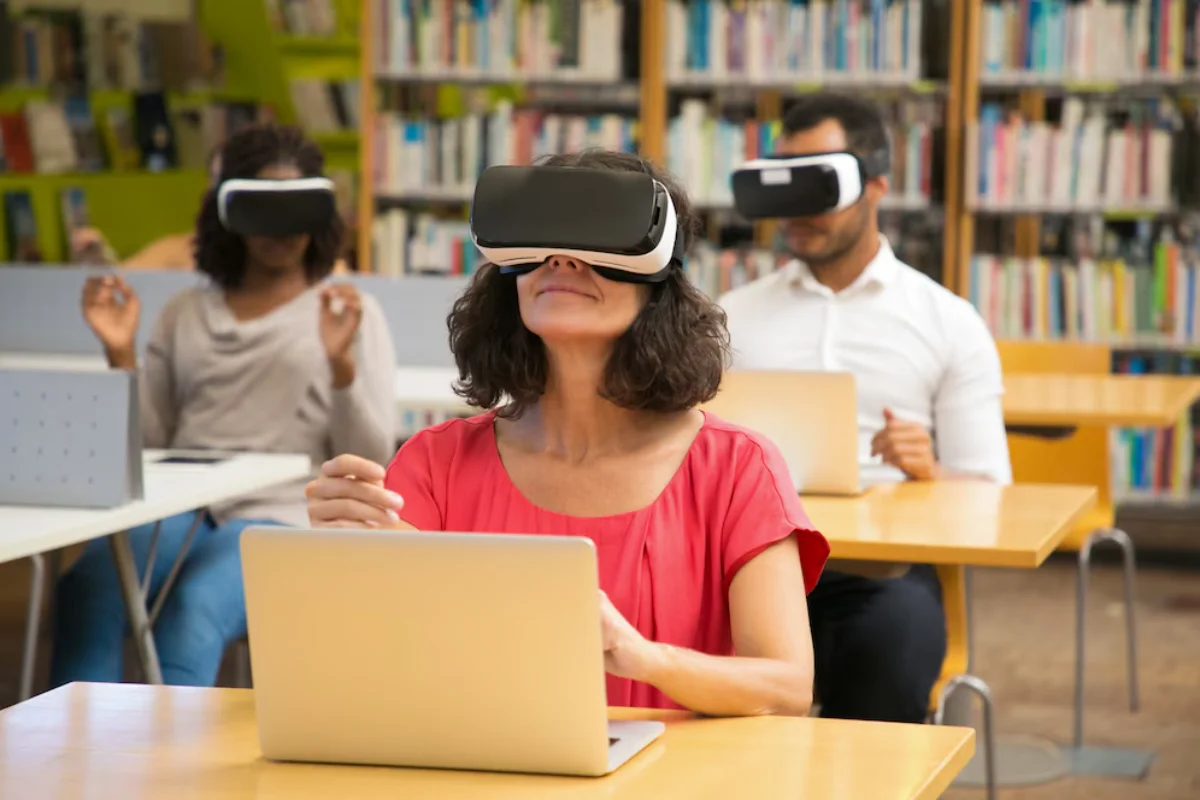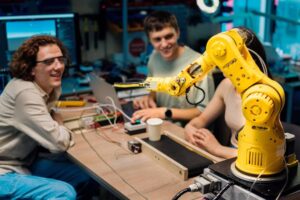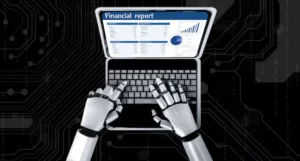The Technology Blog

How AI-Powered Tutors Are Changing Education
AI is changing education. It helps students learn in a more personal, efficient, and accessible way. A major advancement is the rise of virtual tutors. They use machine learning to offer real-time help, tailored lessons, and adaptive learning.
Traditional education often uses a one-size-fits-all method. But AI tutoring systems are changing this. They focus on each student’s unique needs. AI in education tools are changing how students learn around the globe. They help with homework and offer interactive lessons.

How AI in Education is Revolutionising Learning
Artificial Intelligence is being used in various ways to enhance education:
- Personalized Learning – AI looks at how students progress. It adjusts lessons to fit their needs, creating a custom experience that matches their learning styles.
- Instant Feedback – Virtual tutors give quick corrections, explanations, and step-by-step solutions. This helps students grasp complex topics better.
- Accessibility – AI tools support students with disabilities. They provide speech-to-text, text-to-speech, and language translation. This makes learning more inclusive.
- Adaptive Learning Paths – AI changes difficulty based on student strengths and weaknesses. This helps optimise learning and ensures steady progress.
- 24/7 Availability – AI tutors are always ready to help. You can learn whenever you want, without being tied to classroom hours.
- Data-Driven Insights – AI helps teachers see how students are doing. It finds learning gaps and offers specific help.

What Are Virtual Tutors?
Virtual tutors are AI programs that help students learn. They support understanding new ideas, solving problems, and reinforcing knowledge in fun ways. Unlike traditional tutors, they can:
- Work with students at their own pace, allowing them to review difficult topics as needed.
- Identify weak areas and focus on them through targeted exercises and explanations.
- Offer various learning tools like quizzes, videos, and practice tests. This helps meet different learning styles.
- Engage students through gamification, making learning more interactive and enjoyable.
- Help students in many subjects, like math, science, language, and history.
Examples of AI-Powered Virtual Tutors
- Chatbots for Homework Help – Platforms like Socratic (by Google) allow students to ask questions and receive instant AI-generated explanations.
- AI Teaching Assistants – AI assistants like Jill Watson, developed by Georgia Tech, help answer student queries in online courses, reducing the workload for human educators.
- Language Learning Apps – Duolingo uses machine learning to personalise language lessons for users based on their progress, making language acquisition more effective.
- Math and Science Tutors – Platforms like Photomath and Wolfram Alpha help solve equations and provide step-by-step solutions, enhancing problem-solving skills.
- AI-Based Writing Assistants – Tools like Grammarly provide students with writing feedback, improving grammar, clarity, and overall writing proficiency.

Machine Learning in Education: How It Works
Machine learning is at the core of AI-powered tutoring systems. It enables virtual tutors to:
- Analyse student performance – AI tracks learning patterns and suggests personalised study plans, adapting to individual strengths and weaknesses.
- Predict learning outcomes – Based on previous responses, AI can estimate a student’s future performance and recommend areas of focus.
- Adjust content dynamically – Lessons adapt in real-time, providing additional exercises and challenges if a student struggles with a concept.
- Recognise speech and handwriting – Advanced AI tutors understand natural language and handwritten text, enabling better interaction and more intuitive learning.
- Simulate real-world problem-solving – AI can create real-life scenarios to help students apply knowledge in practical situations.
Benefits of AI-Powered Tutors
1. Customised Learning Experience
AI adapts lessons to fit each student’s needs, making learning more efficient and engaging. By personalising content, students stay motivated and retain information better.
2. Reduces Learning Gaps
Students who struggle with traditional teaching methods can receive extra support through AI-driven explanations, additional exercises, and concept reinforcement, bridging gaps in understanding.
3. Enhances Teacher Support
AI tutors don’t replace teachers but assist them by automating grading, tracking progress, and providing insights on student performance, allowing educators to focus on personalised instruction.
4. Encourages Independent Learning
With AI-powered tutors, students can explore subjects beyond the classroom, fostering curiosity and self-learning. AI allows them to take control of their education at their own pace.
5. Bridges Language Barriers
AI-powered translation tools allow students from different linguistic backgrounds to understand lessons more effectively, creating more inclusive learning environments.
6. Promotes Engagement Through Gamification
Many AI tutors incorporate rewards, challenges, and interactive elements to make learning fun, increasing student engagement and motivation.
Challenges of AI in Education
Despite its benefits, there are challenges in implementing AI-powered tutoring systems:
- Lack of Human Interaction – AI cannot completely replace the emotional support, creativity, and motivation that human teachers provide.
- Data Privacy Concerns – AI tutors collect student data, raising concerns about privacy, security, and ethical data use.
- Initial Costs – Implementing AI systems can be expensive for schools with limited budgets, making widespread adoption challenging.
- Dependence on Technology – Students may become overly reliant on AI instead of developing critical thinking and problem-solving skills independently.
- Bias in AI Algorithms – AI models may reflect biases in their training data, potentially impacting the fairness and accuracy of assessments.
Future of AI-Powered Education
The future of AI in education looks promising, with advancements expected in:
- More Interactive AI Tutors – Future virtual tutors will engage students in deeper conversations, simulating real-life tutoring and improving comprehension.
- Integration with Augmented Reality (AR) and Virtual Reality (VR) – AI-powered AR/VR will create immersive learning spaces. Students can explore subjects more interactively.
- Greater Accessibility for Special Education – AI tools will continue to enhance learning for students with disabilities, providing tailored support.
- Improved Teacher-AI Partnership – AI will support teachers, boosting classroom efficiency while keeping human educators in charge.
- AI-Driven Emotional Intelligence – Future AI tutors could learn to spot student emotions. They might change lessons based on how frustrated or engaged students feel.
- More Use of Blockchain for Credentials – AI learning could use blockchain for safe, verifiable digital academic records.
The Rise of AI in Education: How Virtual Tutors Are Changing Learning
The rise of AI-powered tutors is revolutionising education by making learning more personalised, interactive, and accessible. As machine learning grows, students will gain from smarter tutoring systems. These systems will adapt and support traditional education. AI has challenges, but it can improve learning and close educational gaps. This makes it a strong tool for the future of education.
AI is evolving, and its role in education is growing. This will provide better learning experiences for both students and teachers. Whether it’s through virtual tutors, adaptive assessments, or intelligent learning platforms, AI in education is set to transform how we acquire knowledge.
Interested in learning more about AI in education? Subscribe to our newsletter for the latest updates on virtual tutors and emerging machine-learning trends in education!









